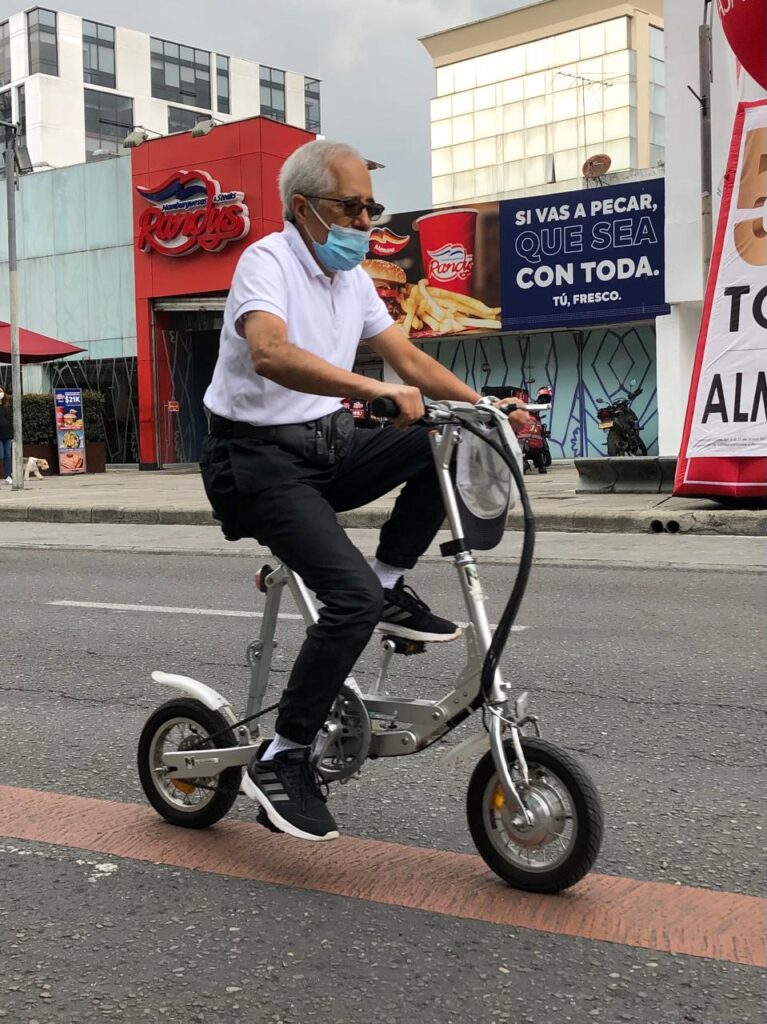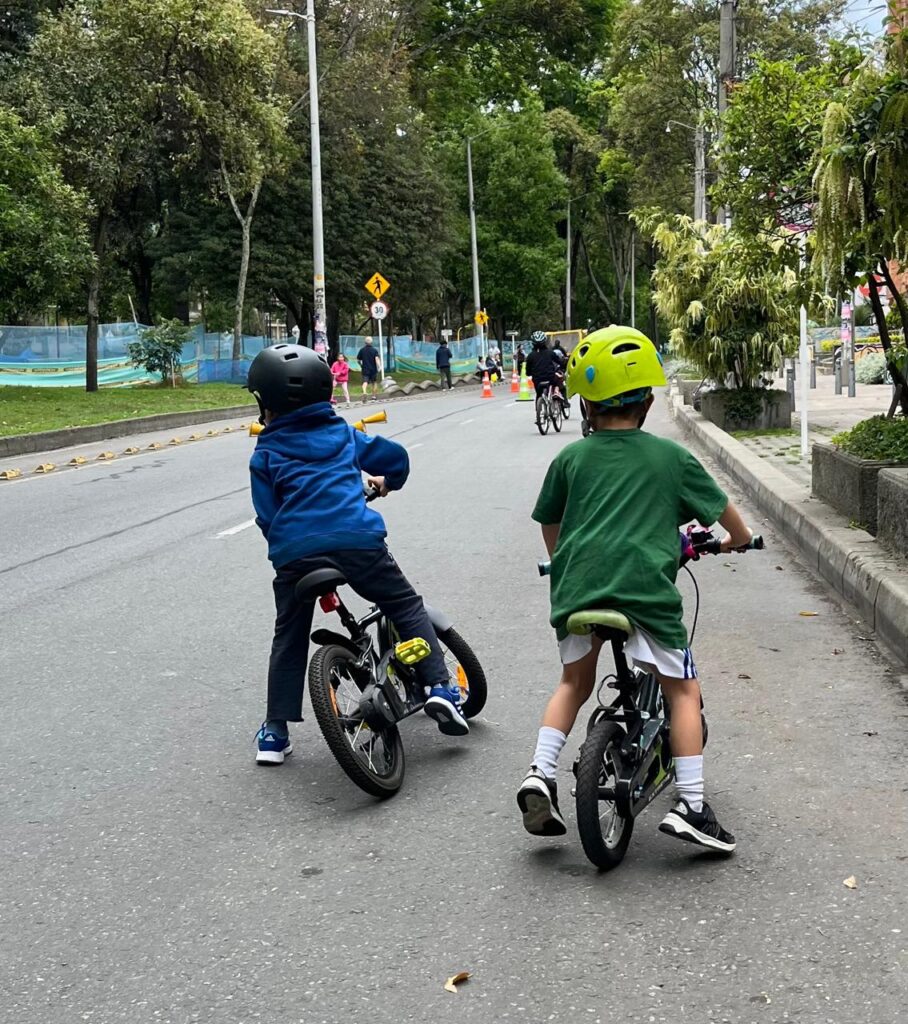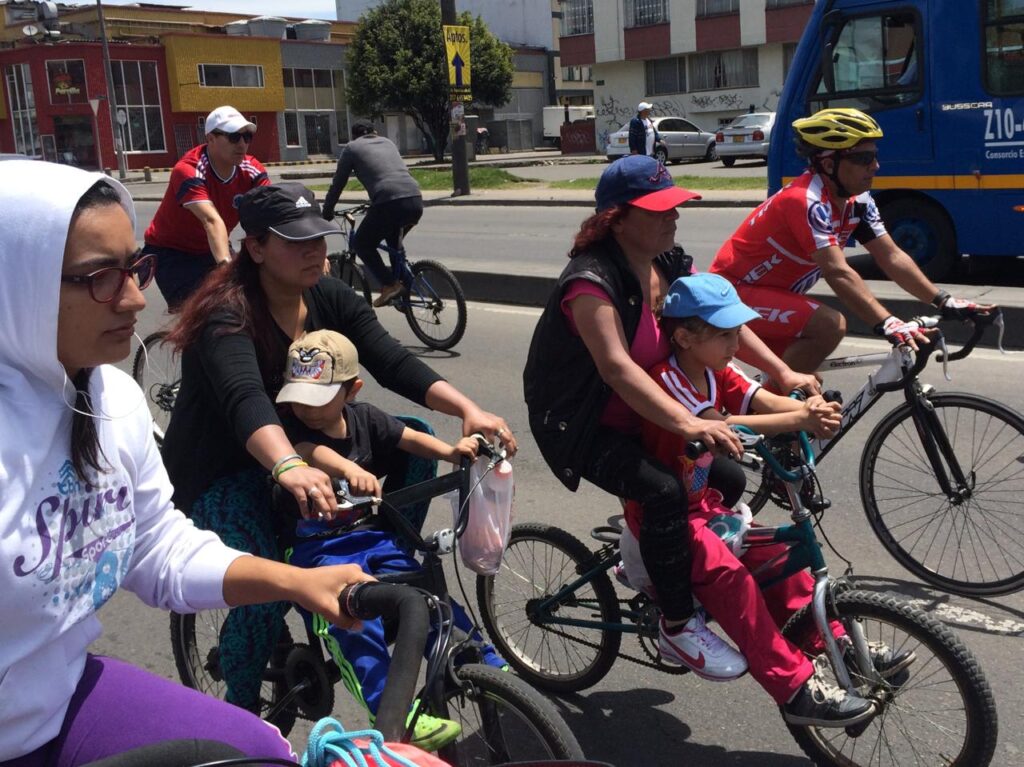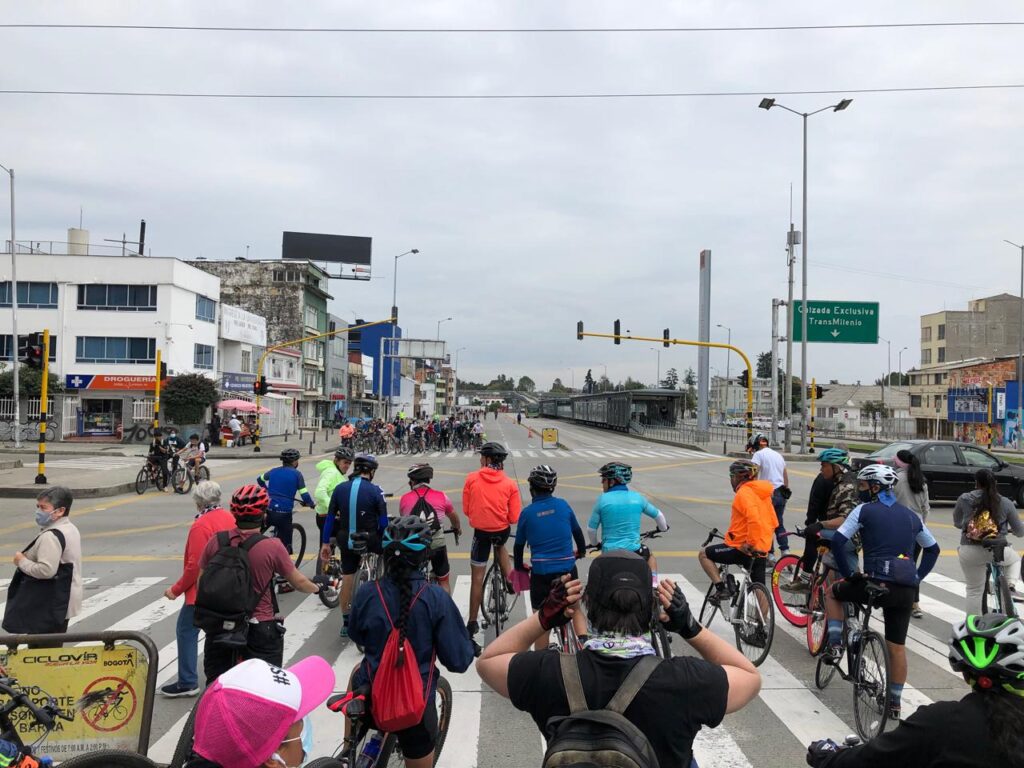After five decades of Ciclovía, we look at why it has a special place in our hearts.
Life in Bogotá is stressful for the average resident. The bulk of the city’s inhabitants wake up early, endure long commutes on crowded buses and some of the world’s most traffic-clogged roads, work long hours at jobs that frequently pay the USD$350/month minimum wage, and return home to (hopefully) enjoy a modest dinner with the family, perhaps dance a little, rest and do it again the following day, all while breathing polluted air, enduring sexism, or dodging the still too numerous petty street criminals or the recently arrived legions of motorcycles.
Monday through Saturday, that is.
However, on 50 Sundays (and 17 blissful Monday holidays per year), the weekly miracle known as Ciclovía transforms Bogotá into, with all due apologies to Disneyland, the happiest place on Earth. Imagine a crowded developing world city’s most prevalent public space, its streets, converted from noisy, congested, contaminated, and dangerous corridors into places of relaxation and human-powered physical activity for perhaps a million people. That’s the reality nearly 70 times annually in Bogotá.
Oh, the things one sees! Hundreds of small children taking their first-ever bike rides; Numerous elderly folks determined to not take their last bike rides. Dozens of lycra-clad Nairo Quintana wannabees (and who knows, they just might make it!). Teens on dates or palling around with their friends. Adolescents and younger children enjoying adult-free playtime reminiscent of bygone eras. Parents sharing bikes with small children. Wheelchair users. Skateboarders. Dog walkers. Joggers. Reckless teenage boys treating all of the above as obstacles as they race their bikes unencumbered by a sense of either safety or common courtesy. Parks full of exercise groups, relaxing families, fruit juice and empanada sellers, and bike repairmen. Smiles all around. It’s simply astonishing.



The first iteration of what soon came to be known as the Bogotá Ciclovía took place on December 15, 1974. Following in the wake of 1970’s Earth Day, similar events in cities such as Seattle and Calgary(!) had preceded it, but Bogotá’s version persisted while others’ receded, and over the decades Bogotá Ciclovía emerged as the leading global model for the conversion of roadways into public spaces to be shared by humans outside of vehicles. During its first two decades, the Ciclovía route varied in length from 20-70 kilometers/12-44 miles, both growing and shrinking at times. It has held steady at 120+ kilometers/75+ miles since the mid-1990s. Cities around the world – including Guadalajara, Los Angeles, and hundreds more – have been inspired by Bogotá’s example to create open streets projects of their own. It’s now December 2024, so Bogotá Ciclovía is celebrating its 50th birthday. Academics and other experts from around the world are gathering here for a #Ciclovia50 conference at the University of Los Andes and other events marking this important anniversary. But what does it all mean?
The Bogotá Ciclovía is so many things. Sure, it’s among the world’s largest recurring bike rides. Yes, it serves as a gateway to bicycling for many who eventually join the ranks of Bogotá’s hundreds of thousands of daily bike commuters. But it’s so much more than a bike ride or a pleasant day in the park.


The Ciclovía showcases Colombians as the shiny, happy people they truly are. For example, there’s surprisingly little visible direct involvement from the local government in Ciclovía beyond dedicated Sports and Recreation Department staff waking up very early to place orange cones, metal barriers, and tape to denote the nearly 80-mile route. Shockingly to North American eyes, the police are seldom seen. Starting in late 2019, I have also noticed a significant reduction in the number of youthful, smiling, helpful, Baywatch-inspired Guardians employed to troubleshoot along the route as well as the trained high-school students who complete their public service requirement for graduation by patrolling intersections during the Ciclovía. Therefore, it’s mostly up to the cycling, walking, and skating Bogotanos to sort out for themselves how to proceed. That’s even as hundreds upon hundreds of people pass through complex intersections or travel along reconfigured or partially-closed streets with no special signalization – and where the route often runs contrary to the normal Monday-Saturday flow. Ciclovía is thus testament to Colombians’ fundamental decency, their ability to manage themselves and cooperate and get along with one another. This includes non-participants: Over the decades motorists have adapted to the unusual street and intersection arrangements and learned how to conduct themselves around people outside of vehicles; I have never witnessed a single bike-car collision during the 250+ Ciclovías in which I have participated. Un buen ritmo, indeed.
Ciclovía is also remarkably effective social policy: In a war-torn country with enormous dislocations owing to decades of rural political violence as well as more typical migration from rural zones to urban areas motivated by economics, Bogotá is Colombia’s safety release valve. The city’s population has grown from 2,000,000 in the 1960s to 8,000,000+ today. Granting people 70 days per year to roam about afoot or by bicycle free of fear of dangerous motor vehicles, to breathe cleaner air, to enjoy quieter parks, to sip fruit juice or converse without having one’s thoughts or utterances drowned out by noise from motorcycles? All this serves to reduce the smoldering tensions in this politically charged city. Ciclovía also effectively temporarily integrates this socially divided city; People travel through neighborhoods, rich or poor, that they otherwise would hardly ever see. This is smart governance.
Roughly 70 days per year, therefore, Bogotá is among the few large cities in the world with a healthy relationship to the motor vehicle. All this does so much to restore – at least from 7am to 2pm on Sundays and holidays – a sense of tranquility, harmony, joy, and balance to the beautiful people of Bogotá who so richly deserve it.
¡Happy 50th Birthday Bogotá Ciclovía!
Chris N. Morfas (IG @thehappygringo) lived in Bogotá from 2014 to 2022 (and he may yet come back!). He’s participated in 250+ Bogotá Ciclovías (along with like events in Mexico City, Los Angeles, Santiago, Medellín, San Francisco, Guadalajara, Chicago, Sacramento…). Previously, he was a longtime nonprofit and government executive leading efforts to create bicycle-friendly communities in California and across the USA.
Photos by Chris N. Morfas
A version of the essay appeared (in Spanish) in La Silla Vacia.




